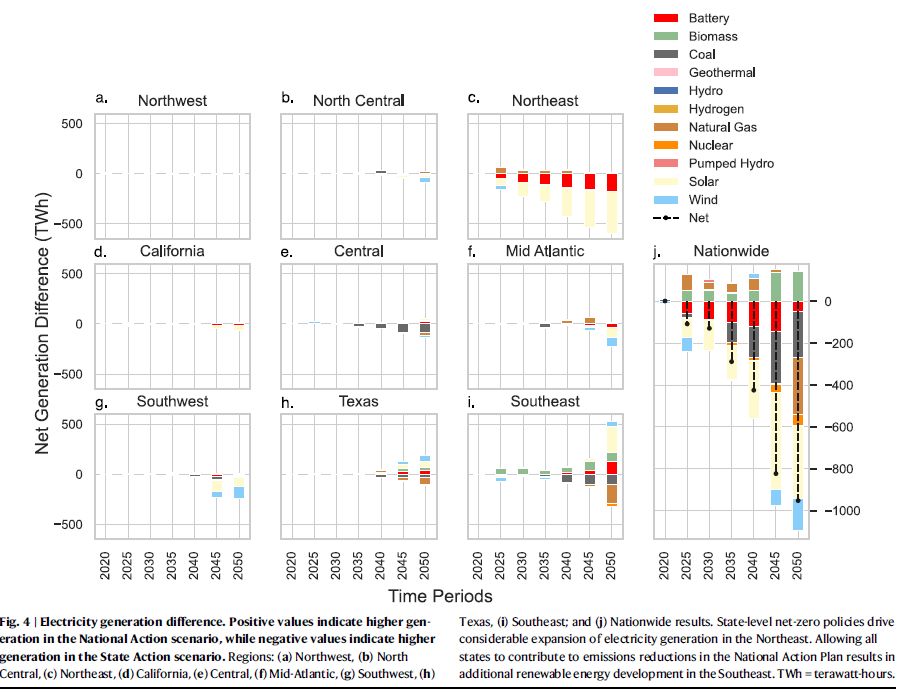
Under State Action, the North Central region imports fossil-based electricity from the unconstrained Central region.
But under State Action, California increases electricity imports from the Southwest and spurs out-of-region renewables.

Under State Action, the North Central region imports fossil-based electricity from the unconstrained Central region.
But under State Action, California increases electricity imports from the Southwest and spurs out-of-region renewables.
Under State Action, we see more EVs, heat pumps, and electrified industry in participating states, requiring +900 TWh/year over National Action. But non-participating states retain a fair amount of natural gas and coal generation without a federal cap.

Under State Action, we see more EVs, heat pumps, and electrified industry in participating states, requiring +900 TWh/year over National Action. But non-participating states retain a fair amount of natural gas and coal generation without a federal cap.
• State Action: net-zero by 2050 in 23 politically-willing states
• National Action: same CO₂-eq reduction but achieved with a nationwide cap
Both reduce emissions 46% by 2050, but with very different tech pathways.

• State Action: net-zero by 2050 in 23 politically-willing states
• National Action: same CO₂-eq reduction but achieved with a nationwide cap
Both reduce emissions 46% by 2050, but with very different tech pathways.

Emissions abatement is increasingly costly as the energy system decarbonizes.
But, as technologies improve, there is greater opportunity for cost reductions in future years, resulting in more emissions reductions at comparable costs.

Emissions abatement is increasingly costly as the energy system decarbonizes.
But, as technologies improve, there is greater opportunity for cost reductions in future years, resulting in more emissions reductions at comparable costs.
$40/t cuts emissions 36% with more wind and solar, and some electrified space heating and transportation.
$100/t gets a 63% drop, near elimination of coal, substantial reductions in the industrial sector, and more widespread electrification.

$40/t cuts emissions 36% with more wind and solar, and some electrified space heating and transportation.
$100/t gets a 63% drop, near elimination of coal, substantial reductions in the industrial sector, and more widespread electrification.





Register at: stanford.zoom.us/webinar/regi...

Register at: stanford.zoom.us/webinar/regi...

